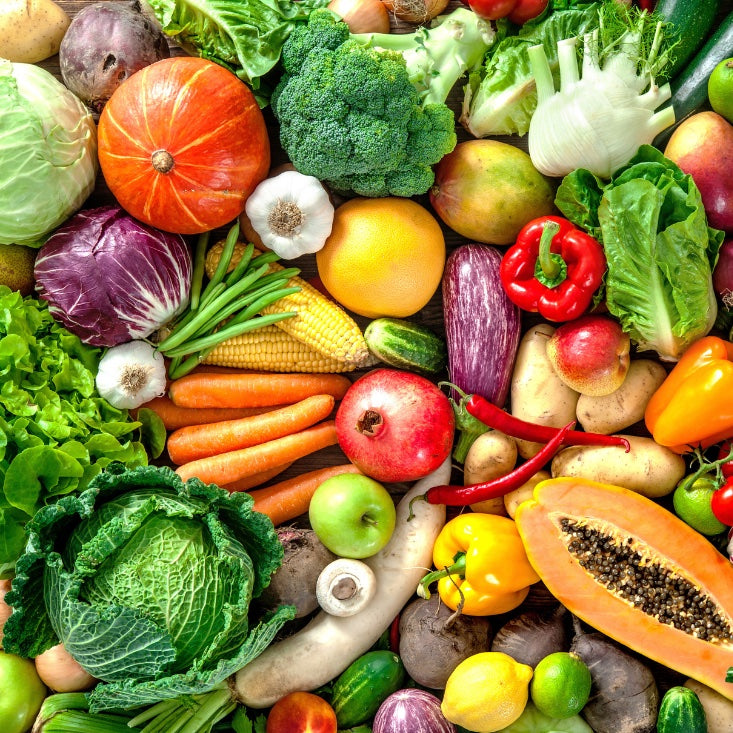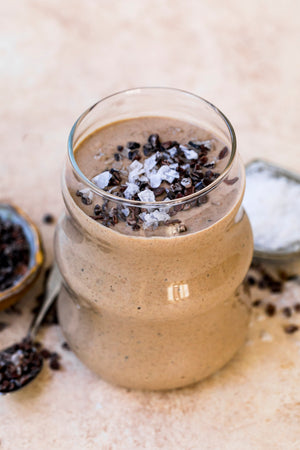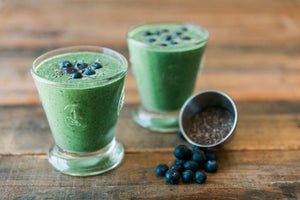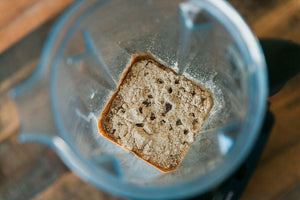Children under eight years should have 2-4½ servings of vegetables each day. According to a report from the Centers for Disease Control and Prevention, nearly half of American children ages 1 to 5 — 49 percent — do not eat a vegetable daily.
A vegetable-rich diet is so critical to a child's well-being. They help aid in digestion, increase bone growth, strengthen the immune system, provide important vitamins and minerals they need for optimal health, and more.
It is no secret that kids can be picky eaters, so here are a few strategies I use to get my kids to not only eat veggies, but actually enjoy them. These tips will allow you to create long-term habits and ensure your children get in their greens in!
Tip #1: Sneak in Greens
An easy way to get more veggies is by looking at the meals you make each week and finding ways to incorporate more veggies into them. Making rice? Go 50/50 with cauliflower or broccoli rice. Chicken noodle soup? Throw in a handful of spinach. Pasta night? Use a lentil pasta instead, and sneak veggies into the meat sauce.
Whenever I make pasta for my kids, I like to grate a zucchini, squash, or carrots into the meat sauce using a cheese grater, and they don’t even know it’s there. Onions and garlic are loaded with phytonutrients too, so mince a clove and grate some onion in, and now you have a fiber-rich meal loaded with vegetables.
Tip #2: Stock up on Vegetables
If you find yourself lacking on your vegetable intake, make it a habit to buy a couple new vegetables next time your at the grocery store. Even if that means picking up one extra zucchini or a head of broccoli, now you will at least have the ingredients available.
It is also important to find veggies that your child enjoys eating, which may take some trial and error. But once you find the vegetables they enjoy the most, make them a staple in their diet. If you have the time (and patience) bring your kids to your next grocery shop to allow them to choose which vegetables they are drawn to.
Taking them to the grocery store to pick out produce has helped get them more involved in making the right choices for their health. It's also never too early to start explaining the necessity of vitamins and minerals to your children. Whenever I get the chance, I like to stop by a local farmers market with my kids to try out the in-season fruit and vegetable selection and bring home their favorites.
Tired of your vegetables going bad? Try this hack! I was the first one to tell my clients to buy frozen vegetables to save money and prevent food waste, but I personally thought they were soggy and disgusting ever time I made them... until I learned how to do this and then the skies opened up and I use this trick probably two to three times a week! Here's what you'll do: Roast your frozen veggies until the water evaporates and they don’t look wet - that’s usually 15-20 minutes in the oven at 400 degrees - then add a high-heat oil and season, and then roast until they are crispy to your liking!
Tip #3: Drink Your Greens
Fab 4 Smoothies are an easy way to up your child’s daily fruit and veggie intake, and a great way to build healthy habits together. Modeling healthy habits is one of the best ways to get your kids to try new foods without having to ask or beg them to try them. A Fab 4 Smoothie is already a staple in my daily routine, and I would start offering my boys sips here and there until eventually it became something they asked for. Now I serve them there own!
I serve up Fab 4 Smoothies the same way I would for myself - 1 serving of protein, 1 tbsp of fat, 1 tbsp of fiber, 1/4 cup of fruit, and a handful of greens (don't worry, they won't even know they are there!), along with other plant foods such as hemp seeds, avocado, nuts, or nut butter.
Be Well by Kelly protein powder includes 20-24g of protein to support your little one's growing body. It's made with only three ingredients: the protein, organic monk fruit for a mellow sweetness without a bitter aftertaste, and organic cacao or organic vanilla powder. We also offer it in a simple unflavored version, with only 1 ingredient (protein!) for anyone with allergies or aversions.
The unflavored grass-fed beef and chocho unflavored protein are both safe for infants. The way we process both is water-based and chemical-free. Think bone broth for the grass-fed and 100% ground chocho bean. I waited to give my boys the flavored versions with monk fruit since it's sweet on their pallets, and instead we add flavor with whole food sources!
A few of our favorite Fab 4 Smoothies:
- Cucumber Kale Apple Avocado Smoothie
- Fruity Fab 4 Under Four Fab 4 Smoothie
- Very Vanilla Fab 4 Smoothie
Tip #4: Get them Involved in the Kitchen
Involving your kids is a great hack to familiarize them with different vegetables. Plus, kids make amazing Sous Chefs. I know giving your kids knives (even plastic ones) can make some of us uncomfortable, but there are plenty of ways to get them involved while keeping them out of harms way.
Here are a few easy ways I get them involved:
- Washing lettuce in a salad spinner and letting them spin it
- Rinsing berries - warning they will eat said berries
- Filling the blender for Fab 4 smoothies
- Seasoning vegetables - use mini stainless condiment cups with pre-measured seasonings and oil for them to add on top and mix with their hands before popping them in the oven
- Broccoli and cauliflower - I cut the broccoli in 1/4 and let them break the florets off
- If you are looking for a job for your kids, asparagus is for you! The fibrous end can easily be snapped off in the exact right place by your kids
- Brussels sprouts - after I cut off the stem, they pull off the top leaves
Research shows that involving your kids with the cooking process increases their acceptance, curiosity, and consumption of nutritious foods. Plus, you’re giving your kids life skills, independence, and building their confidence in the kitchen. It may be easier and faster to do all the cooking yourself, but this is such an easy way to spend time with your kids and expose them to vegetables and making a nutritious, high-fiber meal with the help of your kids is even more meaningful. After all, a healthy household is a happy one!
A 2020 study out of Finland showed a positive example set by both the mother and the father promotes the consumption of vegetables and fruit among 3-5-year-old children. A key takeaway is that if the FATHER ate more vegetables, the child also did. All modeling matters, but this study looked at the impact of parental modeling in households with a mother and father. Regardless of what your household looks like, the more we model healthy eating to our children, the more likely your child is to replicate that behavior.
For more support in raising balanced, empowered eaters, setting the foundation for lifelong health by providing critical nutrients and supporting blood sugar balance from the start, check out my Fab 4 Under 4 course.








